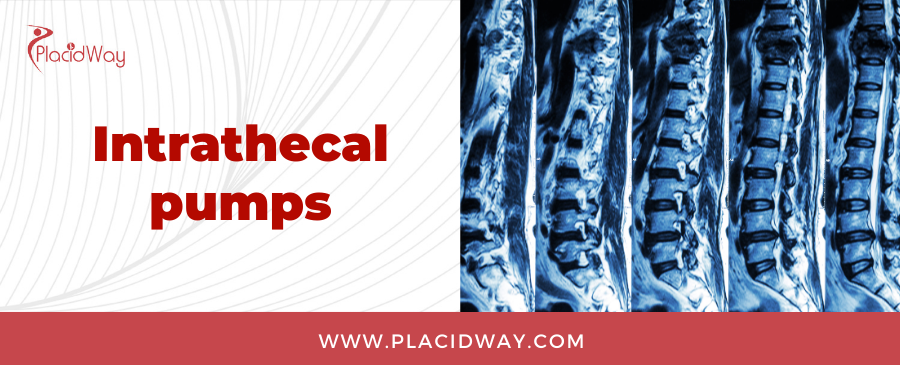Intrathecal pumps
Neurology
Modified Date: 2024-12-09

Key Insights at a Glance
- Intrathecal pumps are medical devices that deliver pain medication directly to the spinal fluid, providing effective pain relief with smaller drug doses.
- Often used for patients with chronic pain conditions, intrathecal pumps are implanted surgically and can reduce the need for oral pain medications.
- International clinics offer intrathecal pump implantation with experienced pain management specialists at competitive prices.
An intrathecal pump is a medical device designed to deliver pain-relieving medication directly to the cerebrospinal fluid around the spinal cord. By delivering medication closer to the pain receptors, intrathecal pumps provide significant pain relief using a fraction of the typical oral medication dose. This treatment option is often recommended for patients suffering from severe chronic pain who have not found relief from conventional therapies or who experience side effects from high-dose oral pain medications.
- Patients with chronic, intractable pain unresponsive to other treatments
- Individuals who experience severe side effects from oral pain medications
- Patients with conditions such as cancer pain, failed back surgery syndrome, or neuropathic pain
- Individuals seeking to reduce dependency on oral opioids
The procedure for intrathecal pump implantation generally includes the following steps:
- Initial Assessment: Comprehensive evaluation to ensure the patient is a suitable candidate for the pump.
- Trial Phase: A temporary catheter delivers medication to assess the patient’s response before permanent implantation.
- Implantation: During surgery, a small pump is placed under the skin of the abdomen, and a catheter is positioned near the spinal cord.
- Medication Programming: The pump is programmed to deliver the appropriate dosage, which can be adjusted as needed.
- Provides effective pain relief with a lower dose of medication
- Minimizes side effects associated with oral pain medications
- Reduces the need for high-dose oral opioids, lowering the risk of dependence
- Adjustable dosing allows tailored pain management for individual needs
- Verify the clinic’s expertise in pain management and implantable devices.
- Ensure the clinic provides comprehensive follow-up care and programming support for the pump.
- Confirm that the clinic follows strict protocols to prevent infection during and after implantation.
- Risk of infection at the surgical site or around the catheter
- Potential for catheter displacement, leading to reduced pain relief or complications
- Mechanical issues with the pump, which may require reprogramming or replacement
- Possible drug side effects, though usually lower than with oral administration
| Country |
Average Cost (USD) |
| Mexico |
$20,000 - $30,000 |
| Turkey |
$18,000 - $25,000 |
| Thailand |
$22,000 - $30,000 |
| India |
$15,000 - $25,000 |
| USA |
$35,000 - $50,000 |
Find Prices for Intrathecal Pump Implantation Near You: click here.
What does an intrathecal pump cost without insurance?
The cost of an intrathecal pump without insurance can vary greatly. In the U.S., it can range from $35,000 to $50,000, whereas international options may range from $15,000 to $30,000, providing more affordable alternatives for patients.
Is an intrathecal pump safe?
Yes, intrathecal pumps are generally safe when implanted and managed by experienced professionals. This treatment reduces medication side effects and improves quality of life for patients with chronic pain.
How long does an intrathecal pump last?
Intrathecal pumps typically last 5-7 years before the battery needs replacement. Regular follow-ups are required to ensure optimal function and adjust medication levels as needed.
What conditions are commonly treated with an intrathecal pump?
Intrathecal pumps are used for chronic pain conditions like cancer pain, severe back pain, neuropathy, and pain from spinal cord injuries that haven’t responded well to conventional treatments.
How does an intrathecal pump reduce medication side effects?
By delivering medication directly to the spinal fluid, intrathecal pumps require much lower doses than oral medications, significantly reducing side effects such as drowsiness, nausea, and dependency risks.
Considering an intrathecal pump for chronic pain relief abroad? PlacidWay connects you with top international pain management specialists and clinics that provide high-quality intrathecal pump implantation at affordable rates. Take control of your pain management and improve your quality of life by scheduling your consultation with PlacidWay today.
